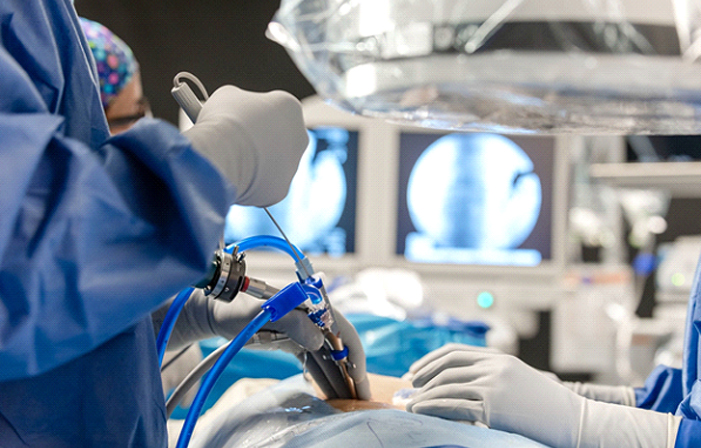Rhinoplasty, commonly referred to as a “nose job,” is a highly transformative surgical procedure that can enhance facial aesthetics, correct breathing issues, and restore facial harmony. While rhinoplasty alone can yield significant improvements, many patients choose to combine it with other facial procedures to achieve a more comprehensive enhancement. Combining surgeries can optimize results, create better facial balance, and streamline recovery, but it requires careful planning and consultation with a skilled surgeon. Exploring the benefits and recovery process of Rhinoplasty in Islamabad can help patients make informed decisions about their cosmetic or functional needs.
1. Why Combine Rhinoplasty with Other Procedures?
The primary reason for combining rhinoplasty with other facial procedures is to achieve overall facial harmony. The nose plays a central role in facial aesthetics, influencing the appearance of the eyes, cheeks, and chin. When other features are out of proportion, rhinoplasty alone may not fully balance the face. By addressing multiple areas in a single surgical session, patients can attain a more cohesive and natural-looking outcome.
Another reason for combining procedures is efficiency. Recovery from facial surgery involves downtime, swelling, and bruising. Undergoing multiple procedures at once reduces the total number of recovery periods, making the process more convenient for patients. Additionally, combining surgeries can sometimes be more cost-effective than undergoing separate operations.
2. Common Procedures Combined with Rhinoplasty
Several facial procedures are commonly paired with rhinoplasty to enhance facial aesthetics:
- Chin Augmentation (Genioplasty): The chin and nose work together to define the facial profile. A weak or recessed chin can make the nose appear larger or disproportionate. Chin augmentation, using an implant or surgical reshaping, can complement rhinoplasty by creating a more balanced and harmonious profile.
- Facelift or Mini-Facelift: For patients seeking rejuvenation, combining rhinoplasty with a facelift addresses both nasal aesthetics and signs of aging in the lower face, such as sagging skin or jowls. This approach ensures proportionality across the entire face.
- Eyelid Surgery (Blepharoplasty): Upper and lower eyelid surgery can refresh tired or droopy eyes. Pairing it with rhinoplasty creates a youthful, balanced appearance by enhancing the central and upper facial features simultaneously.
- Brow Lift or Forehead Lift: Elevating the brow or smoothing forehead lines can enhance overall facial symmetry. When combined with rhinoplasty, these procedures can harmonize the upper and middle portions of the face.
- Cheek Augmentation or Fat Grafting: Enhancing the cheeks with implants or fat transfer can restore volume lost due to aging or genetics. When performed alongside rhinoplasty, cheek augmentation ensures proportionality and enhances the midface structure.
- Lip Augmentation: Adjusting lip volume and shape can complement a refined nasal appearance, especially if the patient desires better balance between the nose, lips, and chin.
3. Benefits of Combining Procedures
Combining rhinoplasty with other facial procedures offers several advantages:
- Enhanced Facial Harmony: Addressing multiple areas allows surgeons to create a balanced and aesthetically pleasing overall look.
- Single Recovery Period: Patients undergo anesthesia and healing only once, reducing the disruption to daily life.
- Cost-Effectiveness: Surgical fees, anesthesia, and facility costs are often lower when procedures are performed together rather than separately.
- Optimized Surgical Planning: Surgeons can coordinate changes to ensure features complement each other, improving long-term results.
4. Considerations and Risks
While combining procedures has benefits, it also involves additional considerations:
- Longer Surgery Time: Multiple procedures increase the duration of anesthesia and surgery, which can increase risks and require careful monitoring.
- Extended Recovery: Although total downtime may be shorter than separate surgeries, initial swelling and bruising may be more pronounced due to multiple surgical sites.
- Surgeon Expertise Required: Combining procedures demands a surgeon skilled in multiple areas of facial plastic surgery. Choosing an experienced, board-certified professional is critical for safe and successful outcomes.
- Patient Health Factors: Overall health, age, and medical conditions must be evaluated to determine whether a patient is a suitable candidate for combined procedures. Surgeons may recommend staging surgeries if risks are too high.
5. Preoperative Planning and Consultation
Successful combined procedures rely on meticulous preoperative planning. Surgeons typically conduct a comprehensive facial analysis, considering bone structure, soft tissue, and skin quality. Imaging tools, such as 3D simulations, allow patients and surgeons to visualize potential outcomes and coordinate enhancements across multiple areas.
During consultation, patients should discuss their goals, priorities, and any concerns about recovery or scarring. Realistic expectations are essential, as the goal is improvement and balance rather than perfection.
6. Recovery and Aftercare
Post-operative care for combined procedures may be more involved than for a single surgery. Patients must follow instructions carefully to minimize complications, manage swelling and bruising, and promote healing. Supportive measures such as proper rest, nutrition, hydration, and avoiding strenuous activity are critical. Close follow-up with the surgeon ensures any issues are addressed promptly.
Conclusion
Combining rhinoplasty with other facial procedures can provide transformative results by enhancing overall facial harmony, optimizing aesthetics, and streamlining recovery. Whether paired with chin augmentation, eyelid surgery, facelifts, or other enhancements, these procedures work together to create a balanced and natural appearance. However, combined surgery requires careful planning, a skilled surgeon, and adherence to post-operative care. With proper evaluation and preparation, patients can achieve comprehensive facial rejuvenation and long-lasting satisfaction.






